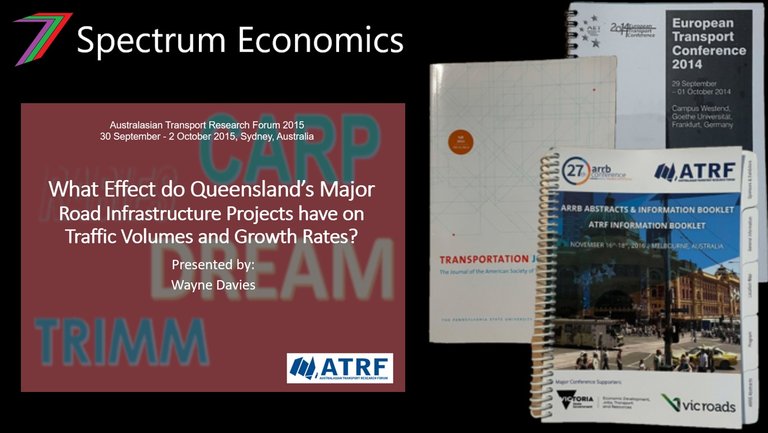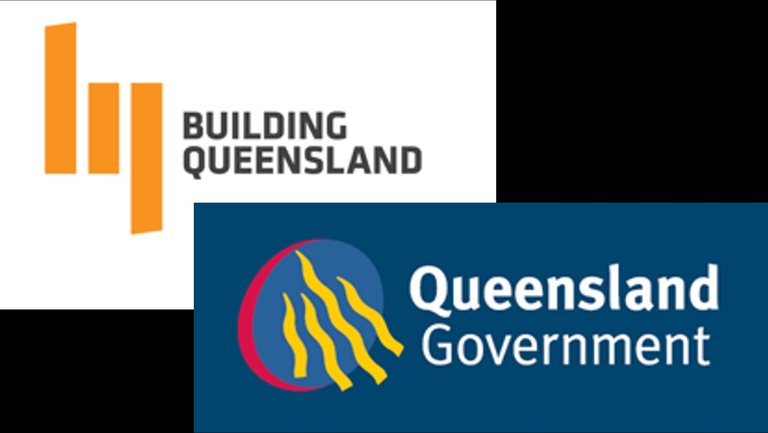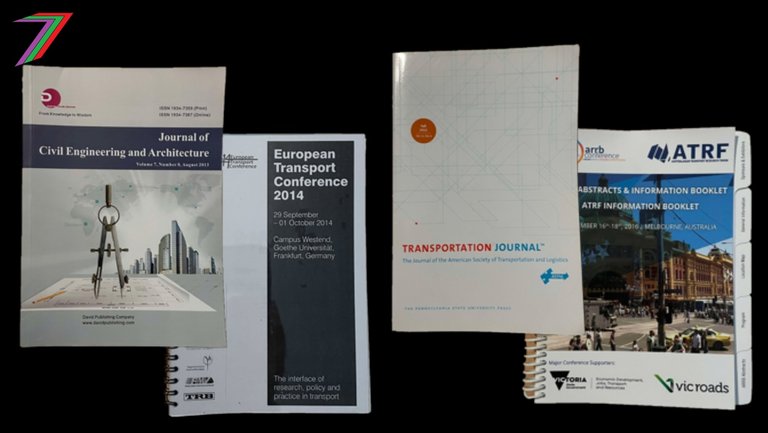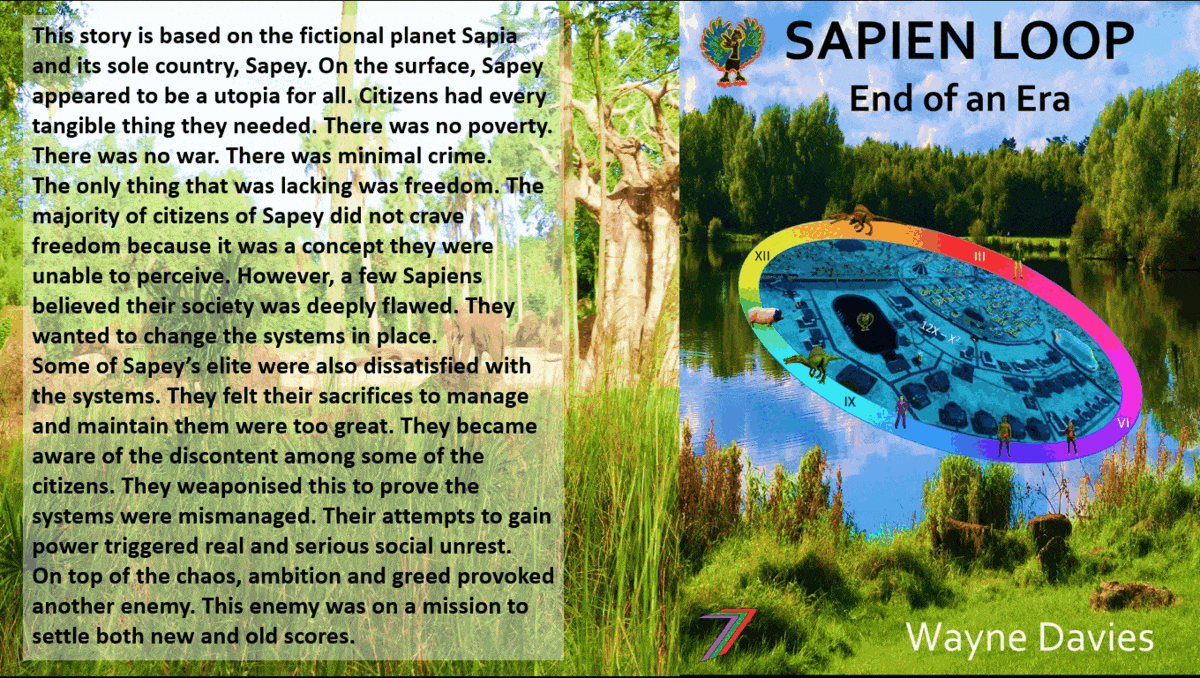My Peer Reviewed Conference and Journal Papers
Hi Everyone,

While working in the Queensland Government, I wrote a dozen conference and journal papers. These papers are kept on several different websites. Annoyingly, many of them are moved frequently to different webpages, and their links keep changing. I was concerned that they might be removed for good. However, I have been able to find all of them. I believe the safest place to store written content is Hive (blockchain). I have decided I will post these papers to my @spectrumecons account. I will publish them in ten different posts. Two of the conference papers were slightly reworked and published in journals; hence, I will only post one version of them. I will include a brief introduction to each paper explaining my motivations for writing it.
In this post, I want to briefly explain my motivations for writing papers as well as my experiences in the Queensland Government, where I wrote all of these papers.
My Time Working in the Queensland Government

From 2007 to 2017, I worked for the Queensland Government. For the first nine years, I worked in the Department of Transport and Main Roads. For the final year, I worked for Building Queensland.
For Transport and Main Roads, I worked as an economist. My main focus was cost benefit analysis and project evaluation of transport and road projects. During that time, I evaluated over fifty different projects and programmes. The combined costs of the projects that I evaluated amounted to several billion dollars. A cost benefit analysis was supposedly an important input into determining whether a project goes ahead. It estimates if the benefits of a project outweigh its costs. If they do, a project is considered economically viable. Therefore, the cost benefit analysis supports proceeding with the project. If estimated benefits do not exceed costs, the cost benefit analysis does not support the project in its current form. The project may have to be changed, delayed, or not go ahead at all.
On paper, my job sounded very important. In theory, I could influence how millions of taxpayer dollars would be spent. In reality, I had zero influence on any of the decision-making. My team and I were under constant pressure to raise a low benefit cost ratio (i.e., where benefits were less than costs; therefore, the ratio was below one). If that was not possible, the project would be justified based on other grounds. Political grounds or shifts in strategic priorities were normally the only reasons a project would not proceed.
Building Queensland was a Government body set up to develop guidelines, offer guidance and advice, and review business cases for the largest transport projects in the State. I worked as the social benefits manager. I was not formally employed as an economist, but my economics expertise was often called upon. My job had shifted from conducting project evaluation to developing guidelines. I was tasked with developing the social benefits guidelines, which I was able to influence my director to change to the social impact evaluation guidelines. I was not a great natural fit for the job, but I eventually managed to put together a reasonably strong set of guidelines. The next part of the job was to train practitioners, who were normally economists or engineers who worked more closely to the project.
In practice, social impact evaluation was mostly a quick tick box exercise to demonstrate that non-monetised impacts had been considered as part of the project’s assessment. Any non-monetised benefits would be used as additional support for the project. Far greater emphasis was placed on the cost benefit analysis. Large companies would be awarded huge contracts to complete comprehensive cost benefit analyses for the largest transport projects in the State. I was often called on to review their work. In most cases, the work was either substandard or heavily biased in favour of promoting the project. This led to some confrontation with the consultants who had produced this work. Ultimately, their work would be signed off with minimal changes to the results and recommendations produced.
The project teams hired the consultants. The project teams wanted results that indicated that their project was necessary and important. Consultants were addressing that desire rather than attempting an unbiased evaluation. Project teams are under considerable pressure from directors to ensure their projects are eligible for funding under the guidelines provided. In this system, bias is inevitable.
I quite liked the work I did for both Transport and Main Roads and Building Queensland.
For Transport and Main Roads, I felt my work was not appreciated, and any useful contribution I could make was not wanted. Management would rather I just blindly did what I was told. My incompatibility with the system and department ideology meant I was not suitable to progress within the department.
For Building Queensland, my skills were only partly utilised. However, I did learn a lot in just one year. I ultimately left because I felt I could not make any meaningful impact. My feedback on how analysis was conducted was not just a footnote to draft reports. The product of my job was to tick a box just as an indication that something had been done. In practice, it really changed nothing.
Writing Papers and Presenting at Conferences

From 2010 to 2017, I wrote a dozen conference and journal papers and articles. I was initially motivated by my desire for self-improvement. I wanted to become knowledgeable and more skilled in analysis. I also wanted to contribute to improving the current methods being used. After working for Transport and Main Roads for around three years, it had become obvious things could be done much better. My earlier papers were focused on improving approaches to analysis. I wrote about economic indicators and measures, network impacts, and programmes of work.
Initially, Transport and Main Roads were supportive of me writing papers and presenting them at conferences. Things began to change around 2013 and 2014. This coincided with the appointment of a new Director-General. The department became considerably more focused on self-promotion. Decisions were made at the top, and the rest of the department was forced to glorify these decisions. This is contrary to objective analysis and efforts to improve the way things can be done.
This new environment was less accepting of research. It became considerably more difficult to present research at conferences. I had to genericise work to be able to present certain themes that might be deemed negative about Transport and Main Roads or the Government. For example, discussing the results of an analysis that shows a project is likely to result in an increase in the number of fatal vehicle crashes would be deemed as presenting the Government in a negative light.
My papers and presentations became more heavily scrutinised. They required various levels of signoff. I was required to make changes and add slides promoting Transport and Main Roads and Government values and objectives. Eventually, all support for writing papers and presenting at conferences was pulled. I was required to fund my attendance myself and attend in my own time (i.e., take leave to do so). This gave me more freedom as I avoided scrutiny from within and was only subject to the conference’s peer review.
During my time working for Building Queensland, I wrote just one paper. This was one of my more controversial papers, even though the title suggested a simple discussion about assumptions. The essence of the paper was about how assumptions can be used in a cost benefit analysis to produce whatever results the Government might desire. Working for Building Queensland gave me additional exposure to how consultants conduct analysis and how they are able to convincingly bias an analysis to produce a desired outcome.
Once I left Building Queensland, I did not write any more transport-related papers. It was difficult to do so because I no longer had access to necessary data or relevant examples. The Government does a good job of keeping information away from the public. Freedom of information requests can be made, but they are difficult and potentially expensive. You need to know exactly what to ask for, and what you might receive is likely to be heavily redacted and not particularly useful.
Links to Published Papers (Links Worked at Time of Posting)
Below are the links to all my conference and journal papers.
Australasian Transport Research Forum Papers
Davies, W. (2015), What Effect do Queensland’s Major Road Infrastructure Projects have on Traffic Volumes and Growth Rates? Australasian Transport Research Forum 2015 (Paper and presentation)
Best, M. and Davies, W. (2013), Dealing with Projected Capacity Constraints in Road Project Evaluation, Australasian Transport Research Forum 2013 (Paper and presentation)
Davies, W. (2013), Program Evaluation: An Applied Case Study, Australasian Transport Research Forum 2013 (Paper and presentation)
Davies, W. (2011) Advanced Methods of Evaluating Benefits from Improved Flood Immunity in Queensland, Australasian Transport Research Forum 2011 (Paper and presentation)
ARRB Conference Papers
Davies, W. (2016) How Assumptions Influence the Results of a Cost Benefit Analysis, 27th ARRB Conference (Paper and presentation)
Davies, W. (2014), Is Road Infrastructure that Improves Operating Speed a Double-Edged Sword When it comes to Road Safety? 26th ARRB Conference (Paper and presentation)
Davies, W. (2014), Calculation of Transport Mode Shift in the Absence of Complex Transport Models, 26th ARRB Conference (Paper and presentation)
Davies, W. (2012), Road Program Evaluation: Assessing the Bigger Picture, 25th ARRB Conference (Paper and presentation)
European Transport Conference Paper
Davies, W. (2014), Upgrading Rural Bridges for Improved Freight Efficiency, 2014 European Transport Conference (Paper and presentation)
Transportation Journal Paper
Davies, W. (2012), Proposed Modifications to the Cost Benefit Analysis Decision Criteria for Road Project Evaluation to Improve Decision-making (Industry Note), Transportation Journal, 51, (4), 473-486
Journal of Civil Engineering and Architecture Papers
Davies, W. (2015), Bruce Highway Action Plan Program Evaluation, Journal of Civil Engineering and Architecture, 9, (3), 350-367
Davies, W. (2013), Advanced Methods of Evaluating Benefits from Improved Flood Immunity in Queensland, Journal of Civil Engineering and Architecture, 7, (9), 973-991
Government Published Manuals
Building Queensland (2016), Social Impact Evaluation Guide, Building Queensland Business Case Development Framework (Note: Release 2 is no longer available. The link is to Release 3)
Transport and Main Roads, (2011), Cost-benefit Analysis Manual, Queensland Government, Brisbane
Presentations
In 2017, I presented the content from my conference papers in YouTube videos. I shared these videos on Hive (Steem at the time). Here are the links to these posts.
How the results of a cost benefit analysis (CBA) are influenced by assumptions
Does induced demand erode project benefits
Higher operating speeds from improved infrastructure might be causing more fatal accidents
Economics Model (Transport Multi-modal) Presented at ARRB Conference 2014
Cost Benefit Analysis of Upgrading Rural Bridges (2014 European Transport Conference)
Cost Benefit Analysis - Program Evaluation (25th ARRB Conference)
Cost Benefit Analysis - Program Evaluation Case Study (Australasian Transport Research Forum)
Cost Benefit Analysis - Dealing with capacity constraints
Cost Benefit Analysis - Approach to Flood Immunity Projects and Programs (ATRF Conference Paper)
My New Book, Sapien Loop

I have published an ebook on Amazon; it is titled ‘Sapien Loop: End of an Era’. The book is fiction. I do not normally write fiction. However, I felt it was appropriate considering what is happening in the world today. Freedom is the most important thing we have, but we are gradually losing it. I have covered this in many of my posts.
In the story, most citizens do not understand the concept of freedom because they have never really experienced it. In essence, the story is about an alien world that might represent our not-so-distant future. There are many other elements to the story that are an abstract and exaggerated version of our reality. I believe this book to be an important read, and I believe it has the potential to change the way you think.
Brief Summary of Sapien Loop

This story is based on the fictional planet Sapia and its sole country, Sapey. Sapey is portrayed as a form of utopia for all its citizens. No poverty. No war. Almost no crime. Opportunities for all.
This was enough for most citizens, but not all. In one of the small regions, some of the citizens had become discontent. They felt something important was missing in their lives. Their discontent did not go unnoticed. Some of the Sapey elite wanted to weaponise this discontent to gain more power. This created more chaos than they anticipated. This led to further widespread social unrest.
On top of the chaos, ambition and greed provoked another enemy. This enemy was on a mission to settle both new and old scores.
If you want to buy a copy of the book, below are links to the relevant Amazon websites for each country it is available in. The book is priced at approximately US$5.08.
- Amazon USA
- Amazon UK
- Amazon Germany
- Amazon France
- Amazon Spain
- Amazon Italy
- Amazon Netherlands
- Amazon Japan
- Amazon Brazil
- Amazon Canada
- Amazon Mexico
- Amazon Australia
- Amazon India
I am also running monthly contests where participants are required to answer questions based on the book. The prize is 30 Hive Power plus upvotes for the first twelve entries. You can recover the cost of the book with just one win.
Hive: Future of Social Media

Spectrumecons on the Hive Blockchain

This post has been manually curated by @steemflow from Indiaunited community. Join us on our Discord Server.
Do you know that you can earn a passive income by delegating to @indiaunited. We share more than 100 % of the curation rewards with the delegators in the form of IUC tokens. HP delegators and IUC token holders also get upto 20% additional vote weight.
Here are some handy links for delegations: 100HP, 250HP, 500HP, 1000HP.
100% of the rewards from this comment goes to the curator for their manual curation efforts. Please encourage the curator @steemflow by upvoting this comment and support the community by voting the posts made by @indiaunited.
It is wise to publish your articles here. It can never be lost, moved or changed on the blockchain. I am waiting for you to publish it to read.
If the managers in a workplace are not smart, honest and hardworking, working there is like torture.
Thanks @tht. They had a very tall hierarchy. It made it very difficult for anyone lower down to be heard.
Now my question is that since they didn't employ you for you economics skills but something different, did they considered paying you some more money, perhaps as a side-stipends for actually contributing economically where they could have otherwise paid heavy money to employ an economist?
The Government only pays based on position and not what you do in that position. They also do not value specialist skills.
Exactly what I thought, but that's saddening, although I guess you did your part when you worked for them.
@tipu curate
Upvoted 👌 (Mana: 38/48) Liquid rewards.
It's always funny how the government does a good job of keeping information away from the public... I think we need more transparency thoughout.
♦️ You got 0.01 FELT for sharing high vibes on Hive.
📋♦️ FELT Info
Your post is a true gem 💎